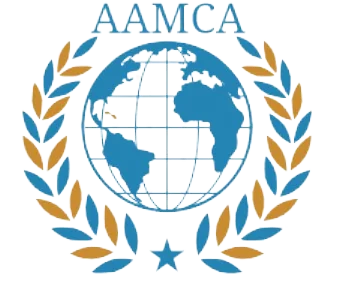Understanding the Deadly Impact of Tsunamis
Tsunamis are among the most destructive natural phenomena, characterized by a series of large ocean waves typically caused by underwater disturbances, such as earthquakes, volcanic eruptions, or landslides. Despite their relative rarity, their potential for catastrophic consequences cannot be overstated. The term “tsunami” originates from the Japanese word for “harbor wave,” encapsulating the devastation that can unfold when these powerful waves rush towards coastal areas.
Historically, tsunamis have wreaked havoc on numerous populations, with the 2004 Indian Ocean tsunami being one of the most catastrophic events recorded. Triggered by a massive undersea earthquake off the coast of Sumatra, Indonesia, the tsunami resulted in the loss of over 230,000 lives across 14 countries. The inundation affected many coastal communities, destroying infrastructure, homes, and livelihoods. Entire villages were erased, and survivors faced immense challenges in the aftermath, grappling with both physical and psychological scars of that fateful day.
Beyond immediate destruction, the long-term effects of tsunamis can be profound. Ecosystems are heavily impacted, fisheries are devastated, and economic recovery can take years, if not decades. Additionally, the social fabric of communities often suffers, as families are displaced and support systems are weakened. The toll is not merely measured in loss of life; the ripple effects extend into economic destabilization and increased vulnerability to future disasters.
This historical context underscores the urgent need for tsunami awareness and preparedness. While tsunamis may be infrequent, the extreme risks they pose necessitate that individuals, communities, and governments remain vigilant and proactive in developing effective response strategies. Understanding the nature and impact of tsunamis is essential for fostering a culture of safety and resilience.
The Evolution and Effectiveness of Early Warning Systems
The catastrophic tsunami of 2004 marked a pivotal moment in the importance of early warning systems. The devastation that occurred underscored the necessity for improved communication and technology to protect vulnerable coastal communities. Modern early warning systems are designed to monitor seismic activity, sea level changes, and oceanic factors that may indicate an impending tsunami, thereby providing critical alerts to populations at risk.
In the years following the 2004 disaster, engineers and scientists worked collaboratively to develop more robust systems. These include the integration of advanced satellite technology, which allows for real-time detection of potential tsunami-generating events. The utilization of sensors placed on the ocean floor, known as DART (Deep-ocean Assessment and Reporting of Tsunamis) buoys, plays a crucial role in enhancing the accuracy of tsunami forecasts. When seismic activities are detected, these buoys measure changes in sea level and transmit data back to monitoring centers, which can then relay warnings to at-risk areas.
An example of the effectiveness of these systems was demonstrated by the alerts triggered by a recent earthquake off the Russian coast. Following the seismic activity, the Pacific Tsunami Warning Center quickly analyzed the data and issued alerts to various nations that could be affected. Although there was no subsequent tsunami, the prompt warning procedures ensured that local authorities were prepared to act, showcasing the systems’ capacity to mitigate disaster impacts through timely communication.
In summary, the evolution of early warning systems since the 2004 tsunami disaster illustrates the advancements in technology and communication that are essential for disaster preparedness. The integration of sophisticated monitoring tools not only enhances our understanding of tsunami risks but also significantly increases the likelihood of timely alerts, ultimately saving lives and reducing damage when disaster strikes. Effective preparedness strategies are crucial for communities that may face similar threats in the future.
Addressing Current Risks and the Need for Improvement
The landscape of disaster risks is altering significantly, with climate change and rising sea levels becoming increasingly pertinent issues for coastal communities. As global temperatures rise, the frequency and intensity of natural disasters, including tsunamis, are predicted to increase. These phenomena pose a serious threat to populations living in vulnerable coastal areas. To mitigate the impacts of such events, it is crucial to identify and address the evolving risks associated with them.
One of the key challenges faced by coastal communities is the continuous urbanization and population growth occurring along shorelines. This trend not only heightens exposure to tsunami risks but also complicates evacuation processes and resource allocation during emergencies. As more people settle in at-risk zones, the potential for casualties and infrastructure damage escalates, emphasizing the urgent need for enhanced preparedness measures. The integration of disaster risk reduction strategies into urban planning is essential to address these challenges effectively.
Investment in early warning systems stands out as a critical component in improving disaster preparedness. These systems play a pivotal role in providing timely alerts to communities at risk of tsunami events, allowing them to implement evacuation procedures and safeguard lives. However, existing systems often require updates and adaptations to remain effective against the backdrop of climate change. Continuous investment in research, technology, and infrastructure is needed to ensure that early warning systems evolve in tandem with changing environmental conditions.
To face these pressing challenges, collaborative efforts among governments, local authorities, and communities are essential. By fostering a culture of preparedness and resilience, societies can better navigate the complex landscape of disaster risks. Meeting these challenges head-on will require not only targeted investments but also a commitment to adaptive strategies that prioritize safety and proactive measures.
A Collective Responsibility: The UN Initiative for Global Safety
The United Nations has long recognized the necessity for a proactive approach to natural disasters, particularly in the context of tsunamis. One of its pivotal initiatives is “Early Warnings for All,” which aims to establish comprehensive multi-hazard warning systems by the year 2027. This initiative emphasizes the importance of preparedness and safety measures tailored to the unique risks posed by various natural disasters. By fostering global collaboration, this initiative seeks to ensure that everyone, regardless of location, is equipped to respond effectively to the threats posed by tsunamis, earthquakes, and other potential hazards.
The ocean’s immense power must be acknowledged and respected. Tsunamis, as devastating natural events, underline the need for robust warning systems to enable timely evacuations and reduce loss of life. The aim of the UN initiative is to create a seamless network of alerts that not only warns of impending disasters but also educates communities about the steps they can take to stay safe. Communities are encouraged to engage with local governments and organizations to invest in disaster preparedness strategies that fit both their geographic context and specific needs.
Every individual has a role to play in enhancing safety against tsunamis and other disasters. By participating in awareness programs and community drills, individuals can contribute to a culture of preparedness, which is crucial in minimizing risks. As we approach the 10th World Tsunami Awareness Day, it is paramount that communities and nations alike are reminded of their collective responsibility to prioritize safety and invest in early warning systems. This initiative calls for action, encouraging each person to advocate for resilience and readiness, ultimately safeguarding lives and property.




